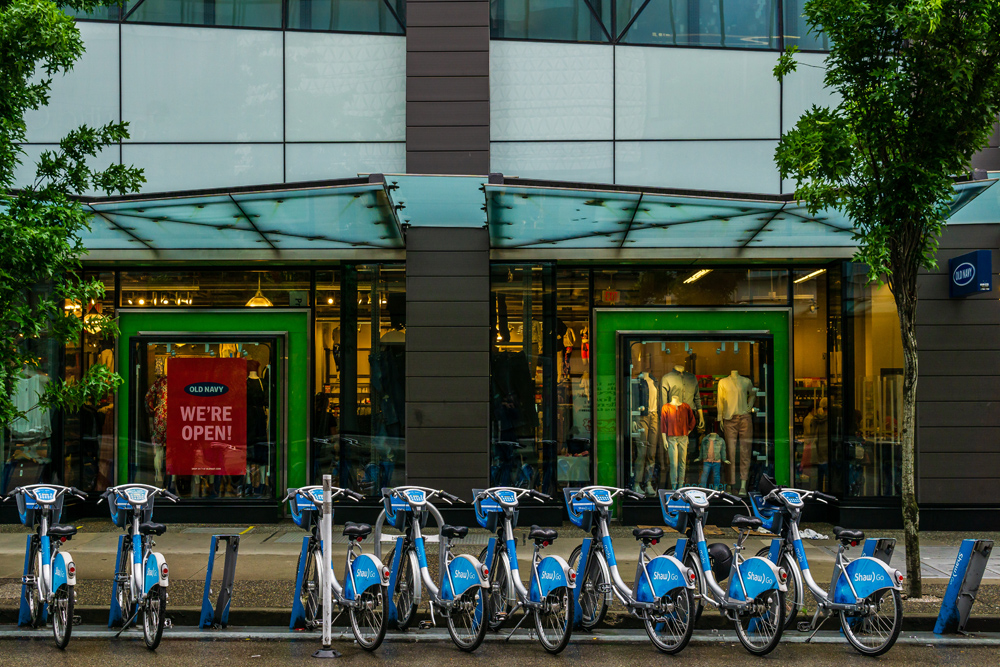
From the nursery onwards, everyone finds sharing difficult at some time or another. But if new, more sustainable models of transportation are going to work, then various stakeholders are all going to have to cede an element of control and let other people know what they know.
Data sharing is one of the intellectual pinch points of our age: by allowing potential competitors into the mix, everyone gives something up – hopefully for a transport model which can, in turn, work better for all concerned.
The World Bank’s Sustainable Mobility for All initiative created the report Sustainable Mobility: Policy Making for Data Sharing (accessible at www.sum4all.org), bringing together 50 or so organisations in the transportation sector – roads, maritime, rail and aviation – to give their input on the issue. “That was the first innovative step in a way because we always work very much in silos mode,” explains Susanna Zammataro, director general of the International Road Federation (IRF) in Geneva, Switzerland.
“Road people talk to road people, aviation with aviation, so it has been a fascinating exercise to come together around this vision of a sustainable mobility for all,” she tells ITS International. “And there’s been a lot of learning on all fronts. It’s a very difficult topic, and this is the first time that a report like this has been produced. Governments and businesses are using mobility data for innovative uses, to accelerate the transition towards a more sustainable future. There’s a lot of applications that have potential to create great public good and value – but everyone is working in silos. We realised with this piece of research that, when mobility data can be exchanged across multiple parties, that’s exactly where you create much more value.”
Why don’t we share more data?
The report examines some of the barriers which prevent data sharing from taking place, such as: privacy, perceived or real competition, issues around interoperability, concerns around cybersecurity – and also questions over the ethical use of data.
“Right now, a lot of entities see the potential but they’re reluctant to share data that they hold,” says Zammataro. “Some mobility sector stakeholders consider data to be an asset that can yield some significant value - however, much of that value is actually realised only by aggregating data with other sources. And in the case of mobility, the problem is that aggregating data is complicated by the fact that not all the data is created equal - and that not all the data is equally valuable.”
While this is a complex issue, the report looks at a number of use cases. Demand-responsive public transit, urban planning and infrastructure investment and connected infrastructure for real-time mobility management are seen as being of high public value.
It also sees several areas – Mobility as a Service (MaaS), intelligent transportation systems in cities, predictive incident response systems, optimized electric vehicle (EV) charging infrastructure and vehicle automation for last-mile freight delivery – as “critical opportunities for policy intervention”.
“So it provides a policy framework to facilitate data sharing and explains why it is really important,” Zammataro adds. “And it serves as a guidebook to policymakers globally. It’s not just the developed world, this can be easily used as well in low- and middle-income countries, and it provides a categorisation of the policies required to enable and facilitate and catalyse data sharing in mobility sectors, among public and private sector stakeholders.”
The report sets out what the policy framework looks like, along with a number of recommendations and case studies – all while acknowledging that solutions need to be local rather than one-size-fits-all, that data sharing is still in its infancy and that we have limited evidence from regulatory practices so far.
Finding the right framework
The framework itself (see graphic at foot of page) consists of five interdependent and complementary layers and nine elements for policy intervention that address the lifecycle of a data-sharing initiative. Each layer defines an area of policy intervention corresponding to data flow in a data-sharing collaborative, with specific policy elements in each layer discussing the role of policymaking for each corresponding layer.
There are 33 policy suggestions in the framework and these can be tailored and adapted by policymakers to suit their own local mobility system, urban environment and priority use cases.
Some public and private entities are by nature more forward-looking, others are more apprehensive about data exchange. “The policy framework is a way of shaping the boundaries within which we are going to exchange right now, there’s some clear rules,” says Zammataro.

Rather than facing the unknown, therefore, it gives companies and agencies something on which to focus. “I think there’s sometimes a mix of fear and the necessity to reduce the risk for the business - and at the same time they also see the great potential,” she continues. “If this really flies and people start sharing data correctly along the kind of lines in the report, it’s a win-win for everybody.”
There are 10 global case studies annexed to the report, looking at how the policy framework can be applied practically. These include Antwerp, Los Angeles, Singapore and Bogotà. At the launch webinar, Nicolas Estupinan, secretary of mobility in Bogotà, spoke of how things worked on the ground in the Colombian city.
“He is facing these issues every day, and he was so straightforward,” says Zammataro. “He said: ‘I don’t want to own the data, you can do whatever you want with your data. I just need, you know, those data to do a couple of things. The rest, you can do your business, we have nothing against that.’ And that’s what exactly the companies are looking for: they want to be reassured that they can still do business around it.”
Going forward, the group of experts will be working on a series of demonstration projects in different geographies and relating to different use-cases. IRF has organised events to let people know about the report, discussing some of the specificities of given regions through a series of regional webinars.
“In parallel, we are discussing pilot projects,” says Zammataro. “We want to see concretely how this translates with a couple of cities: so we’re looking at one in Latin America, one in Africa and also one in Europe. So that’s the phase two of this work which is going to start early in 2022. The first thing we will do with those cities is also to identify the specific use case - is it MaaS? Is it one of the other use cases that we have in the report, like advanced infrastructure management, or anything else? Once we have defined the use case, then the point will be to take a stock of what exists, and then try to work with the authorities to build that policy framework and see how it works.”
To do this, she says, we will have to “reproduce a little bit the ecosystem we had around the working group”. This means getting different stakeholders, including the private sector, together to work and build a framework that everyone can then sign off on.
“We want to bring impact, bring value,” concludes Zammataro. “So it’s an exciting time.”












